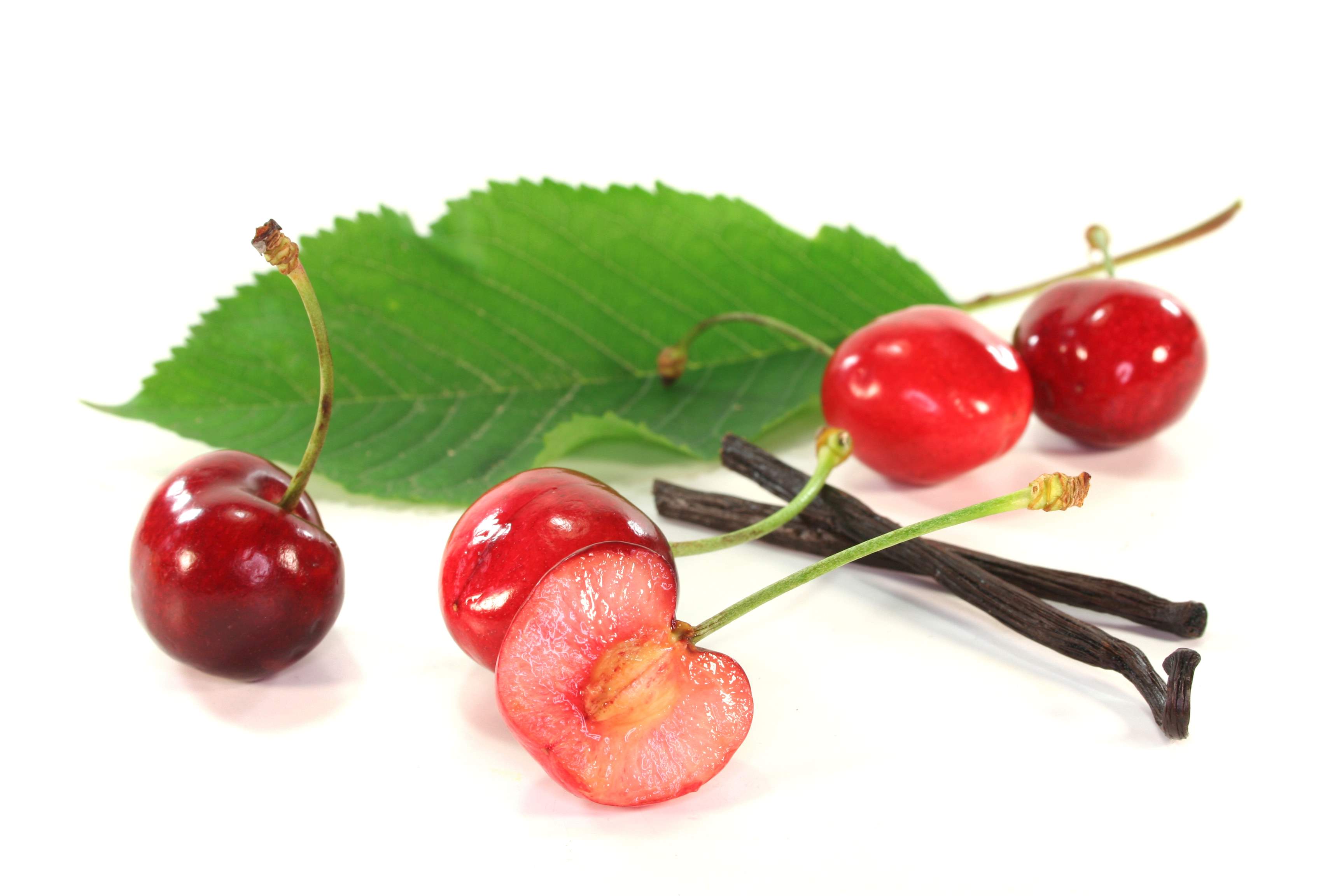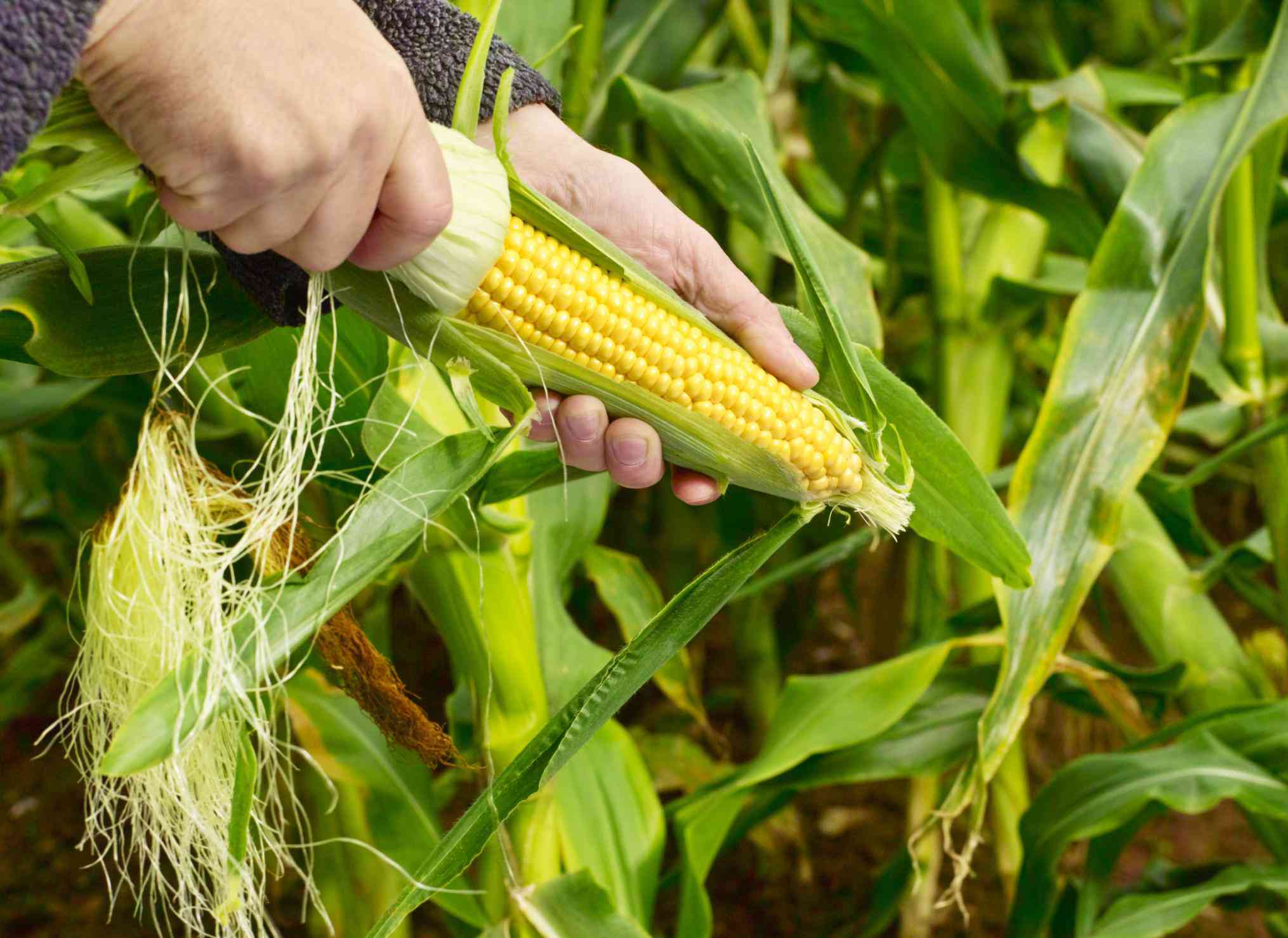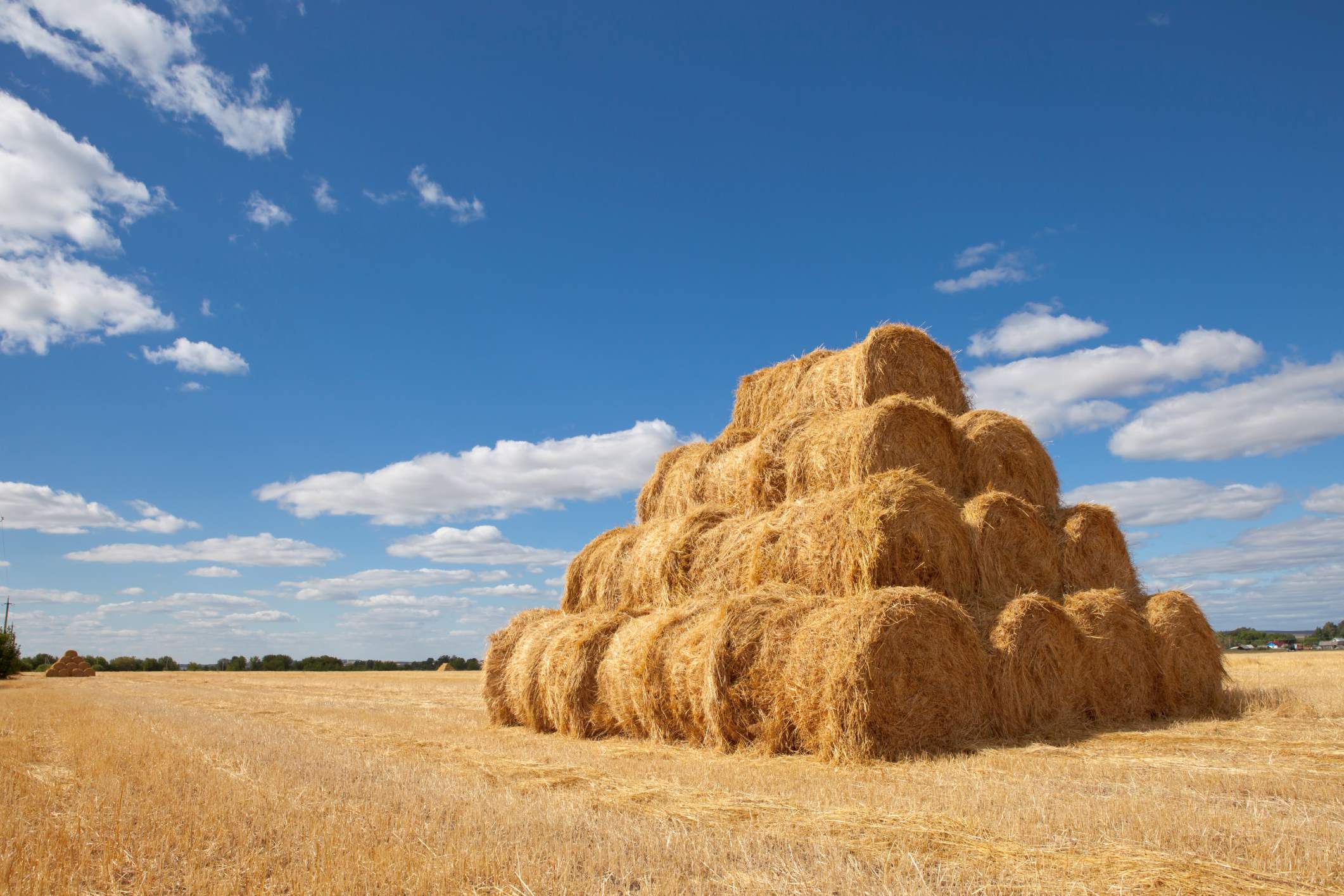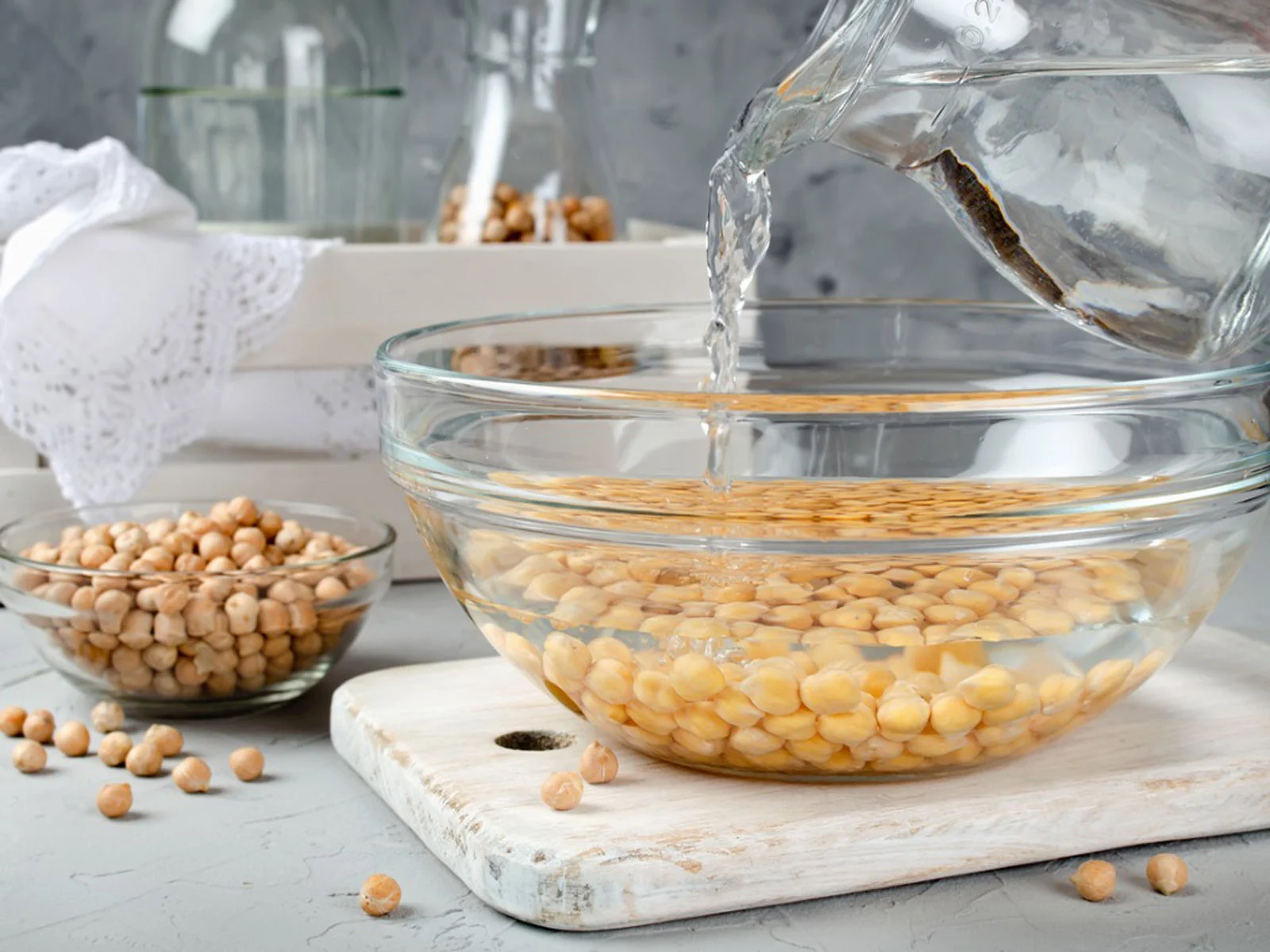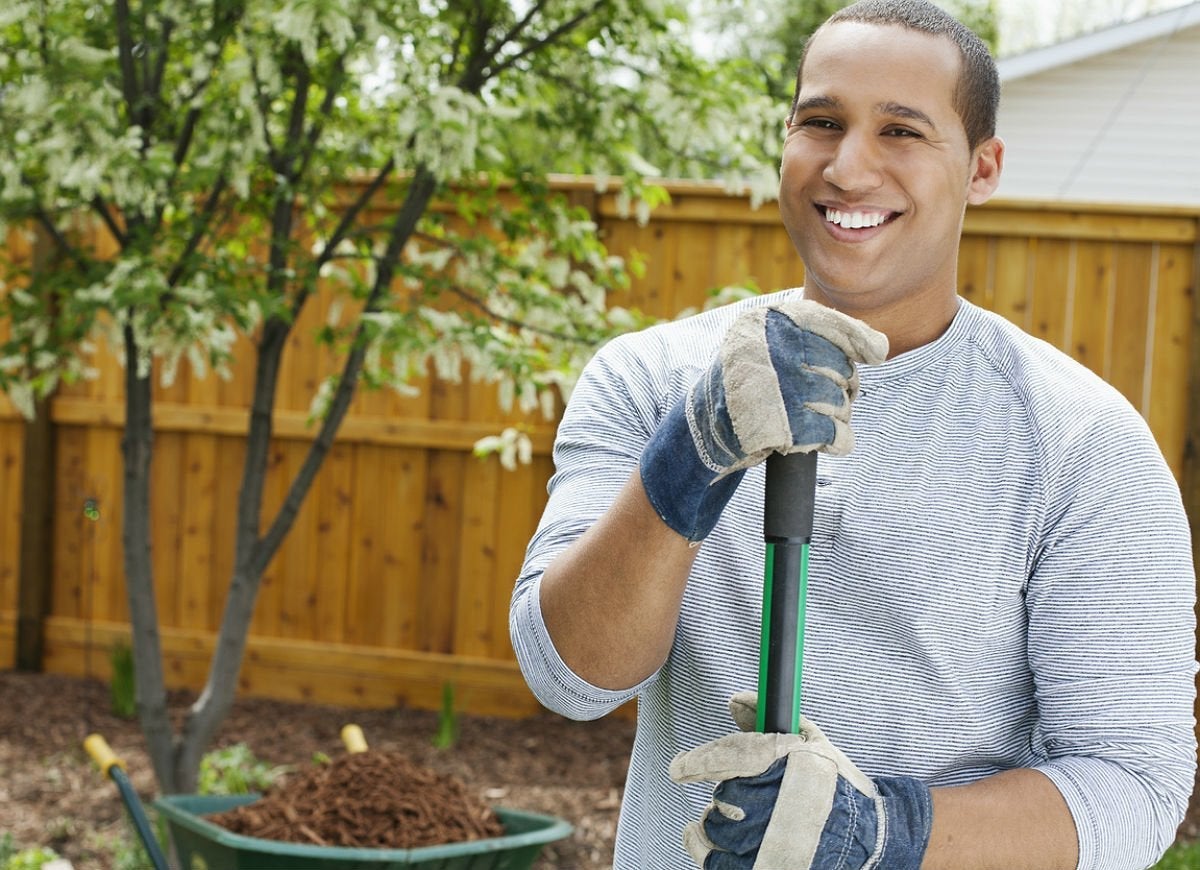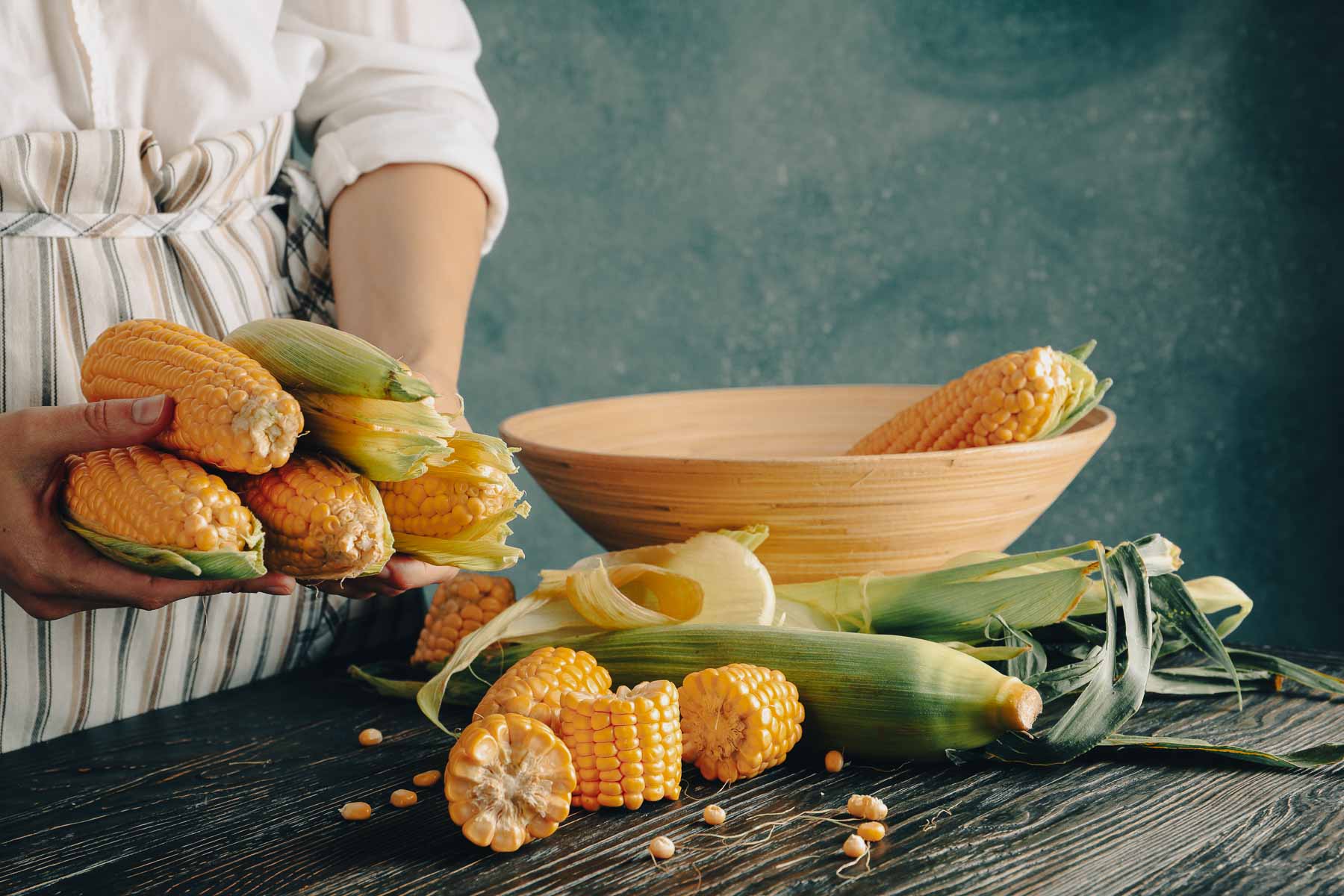Home>Types of Gardening>Ornamental Gardening>What Month Do You Plant Poppy Seeds


Ornamental Gardening
What Month Do You Plant Poppy Seeds
Modified: January 22, 2024
Learn when to plant poppy seeds and other helpful tips for ornamental gardening.
(Many of the links in this article redirect to a specific reviewed product. Your purchase of these products through affiliate links helps to generate commission for Chicagolandgardening.com, at no extra cost. Learn more)
Table of Contents
Introduction
Welcome to the world of ornamental gardening, where the beauty of nature comes alive through vibrant and captivating plants. Among the myriad of plants that can transform your garden into a stunning haven, poppies hold a special place. These delicate and elegant flowers have been cherished for centuries for their enchanting colors and graceful presence.
Whether you are a seasoned gardener or a newcomer to the world of ornamental gardening, understanding the best time to plant poppy seeds is crucial for a successful and flourishing garden. By knowing when to sow these seeds, you can ensure optimal growth and blooming, resulting in a breathtaking display of poppy flowers.
But before we delve into the planting schedule, it is important to familiarize ourselves with poppy seeds. These tiny black or brown seeds are the starting point of the poppy’s life cycle. Packed with nutrients, they contain all the essential elements needed to sprout and grow into a majestic flower.
When it comes to poppy seeds, there are various factors to consider before planting. The climate, soil conditions, and the type of poppy species all play a significant role in determining when and how to plant these enchanting flowers. By understanding the specific needs of poppies, you can provide them with the optimal conditions for growth.
In this article, we will delve into the intricacies of planting poppy seeds. We will explore the best time to sow these seeds, taking into account different climates and geographical regions. Furthermore, we will guide you through the process of preparing the soil, planting the seeds, and caring for the poppy plants throughout their lifecycle.
Whether you are looking to add a touch of elegance to your flower beds or create a vibrant poppy field, this comprehensive guide will equip you with the knowledge and insights to successfully grow and nurture poppy seeds.
Understanding Poppy Seeds
Before we dive into the specifics of planting poppy seeds, it’s important to understand the nature of these tiny treasures. Poppy seeds are small, black or brown seeds that are harvested from the poppy flower. They are incredibly versatile and can be used for culinary purposes, such as in baking or as a topping for breads and pastries. However, in the world of ornamental gardening, poppy seeds take on a whole new role as the starting point for a stunning display of flowers.
Poppy seeds are rich in nutrients and contain essential oils that contribute to the health and vigor of the plant. When planted in the right conditions, these seeds germinate and transform into beautiful poppy plants that boast a wide array of colors and shapes. From vibrant reds and oranges to soft pinks and purples, poppy flowers are truly a sight to behold.
It’s worth noting that not all poppy seeds are the same. There are different species and varieties of poppies, each with its own unique characteristics. Some popular varieties include the Oriental poppy (Papaver orientale), California poppy (Eschscholzia californica), and the Icelandic poppy (Papaver nudicaule). Each type of poppy has its own preferred growing conditions and requirements.
When purchasing poppy seeds for planting, make sure to select a variety that is suitable for your climate and growing conditions. Pay attention to the specific instructions on the seed packet, as they will provide valuable insights into the ideal planting method for that particular variety.
Another important aspect to consider when working with poppy seeds is their dormancy period. Poppy seeds have a natural dormancy mechanism, which means they require a period of chilling or moist stratification in order to break dormancy and promote germination. This can be achieved by sowing the seeds in the fall or by subjecting them to a period of refrigeration before planting.
Understanding the characteristics and needs of poppy seeds is crucial for successful germination and growth. By selecting the right variety and providing the proper conditions for dormancy and germination, you can ensure the best possible outcomes when planting poppy seeds.
Factors to Consider Before Planting
Before you start sowing poppy seeds, there are several important factors to consider to ensure the success of your gardening endeavor. By taking these factors into account, you can create optimal growing conditions for your poppy plants and enjoy their beauty throughout the season.
Climate: One of the most crucial factors to consider is your climate. Poppies thrive in cool to moderate temperatures and require a period of chilling or cold stratification to break dormancy and trigger germination. It’s essential to select poppy varieties that are well-suited to your specific climate and growing zone. Some varieties, like the Oriental poppy (Papaver orientale), prefer cooler climates, while others, like the California poppy (Eschscholzia californica), are more tolerant of warmer conditions.
Soil Type: The type and quality of soil can greatly impact the growth and health of your poppy plants. Poppies prefer well-drained soil that is rich in organic matter. They thrive in sandy or loamy soils that offer good drainage. If your soil is heavy or clay-like, consider incorporating organic matter, such as compost or well-rotted manure, to improve its texture and drainage capabilities.
Sunlight: Poppies are sun-loving plants and require at least 6-8 hours of direct sunlight per day. Choose a planting location that receives ample sunlight to ensure optimal growth and blooming. Avoid shaded areas or spots with excessive shade, as this can lead to weak and leggy plants with limited flower production.
Watering: While poppies can tolerate drought conditions once established, they still require consistent watering during their early growth stages. During the germination and establishment phase, keep the soil evenly moist. Once the plants are established, reduce watering, allowing the top layer of soil to dry out between watering sessions. Overwatering can lead to root rot and other plant diseases.
Companion Plants: Consider incorporating companion plants that thrive well with poppies. Plants such as lavender, salvias, and roses can complement poppies and provide a stunning contrast in colors and textures. Additionally, some companion plants can attract pollinators, which can aid in the fertilization of your poppy flowers.
Space Availability: Poppies can grow to varying heights and widths depending on the species and variety. Consider the space available in your garden or flower bed before planting. Be mindful of their mature size and give them enough room to spread and flourish without crowding other plants.
By considering these factors before planting, you can create an optimal environment for your poppy plants to thrive. Understanding the specific needs of poppies and tailoring your garden to meet those needs will go a long way in ensuring beautiful and healthy poppy blooms throughout the season.
The Best Time to Plant Poppy Seeds
Timing is crucial when it comes to planting poppy seeds. The ideal time to sow poppy seeds depends on various factors, including your climate, the specific variety of poppy, and the desired blooming season. By planting at the right time, you can maximize the chances of successful germination and vibrant flower displays.
In general, the best time to plant poppy seeds is in early spring or fall. Spring planting allows the seeds to break dormancy and take advantage of the warming temperatures and longer days. Fall planting, on the other hand, takes advantage of the natural chilling period during winter, providing the seeds with the necessary cold stratification.
If you live in a region with mild winters and cool spring temperatures, fall planting is generally recommended. The poppy seeds will undergo their required chilling period during winter, and once spring arrives, they will be ready to germinate and start their growth cycle.
In colder regions where winters can be severe, it is best to wait until early spring to sow poppy seeds. Planting in early spring gives the seeds a chance to benefit from the gradually warming temperatures and increasing daylight hours. This allows for a more stable and favorable environment for germination and growth.
It’s important to note that poppies prefer cool to moderate temperatures for optimal growth. Excessive heat can hinder germination and lead to poor plant development. If you live in a region with hot summers, it might be best to avoid planting poppy seeds during the peak of summer and instead focus on early spring or fall planting.
When selecting the specific date for planting, consider the average date of the last frost in your area. Planting after the last frost ensures that the poppy plants won’t be damaged by frost, which can be detrimental to their growth. Check with your local agricultural extension office or use online resources to determine the average last frost date in your location.
To provide the poppy seeds with the best chance of germination, prepare the soil well before planting. Clear the area of weeds and debris and ensure that the soil is loose and well-drained. This will create an ideal environment for the seeds to establish their roots and grow.
By timing your poppy seed planting correctly and providing the optimal growing conditions, you can enjoy a beautiful and bountiful display of poppy flowers in your garden. Whether you choose to plant in spring or fall, remember that patience and care are the key to success in growing these magnificent flowers.
Planting Poppy Seeds in Different Climates
Poppy seeds can be successfully planted in a variety of climates, with some adjustments and considerations based on the specific conditions. Whether you live in a cool, temperate, or warm climate, there are ways to adapt your planting methods to ensure the best possible results for your poppy seeds.
Cool and Temperate Climates: In regions with cool or temperate climates, where winters are moderately cold and summers are mild, poppies can thrive. These climates are ideal for a wide range of poppy varieties. For spring planting, sow the seeds as soon as the soil becomes workable and the risk of frost has passed. This will provide ample time for the seeds to germinate and establish before the heat of summer arrives. For fall planting, sow the seeds in late summer or early fall, taking advantage of the cooling temperatures and increasing rainfall. This will allow the poppy seeds to undergo the required cold stratification during winter and germinate in early spring.
Hot and Arid Climates: In regions with hot and arid climates, careful planning and timing are essential to successfully grow poppies. These climates can be challenging for poppies, as excessive heat and lack of water can hinder seed germination and plant growth. It’s best to avoid planting poppy seeds during the peak heat of summer. Instead, focus on fall planting, when temperatures are slightly cooler. This will allow the seeds to benefit from the more favorable growing conditions and establish their roots before the onset of intense heat. Additionally, providing some shade and regular watering during the hottest part of the day can help protect the delicate poppy plants from stress and promote their growth.
Cold and Harsh Climates: In regions with cold and harsh climates, winter survival of poppy plants can be a challenge. Severe frost and freezing temperatures can damage or kill poppy plants. To overcome this, it’s recommended to plant poppy seeds in early spring, after the danger of frost has passed. Alternatively, you can start the seeds indoors, in pots or trays, and transplant them outdoors once the weather warms up. This will give the poppy plants a better chance of survival and allow them to establish stronger roots before facing the harsh winter conditions.
Regardless of the climate you live in, proper soil preparation, watering, and providing the ideal growing conditions can greatly increase your chances of success in growing poppies. Understanding the specific requirements of poppy seeds and adapting your planting methods to suit your climate will ultimately lead to beautiful and flourishing poppy plants in your garden.
Preparing the Soil for Planting
Preparing the soil is a crucial step in ensuring healthy growth and development of poppy plants. Proper soil preparation creates an optimal environment for the seeds to germinate and establish their roots. By following these steps, you can provide your poppy seeds with the best start possible:
1. Clear the area: Begin by clearing the planting area of any weeds, grass, or debris. This will reduce competition for nutrients and help prevent unwanted plants from overshadowing or hindering the growth of your poppy plants.
2. Loosen the soil: Use a garden fork, tiller, or hand tools to loosen the soil to a depth of about 6 to 8 inches. This will improve soil aeration and drainage, allowing the poppy roots to penetrate easily and establish themselves.
3. Remove rocks and large debris: While working the soil, remove any rocks, sticks, or large clumps of debris. Poppy roots prefer a clear pathway to spread and establish, and obstructions can hinder their growth.
4. Test the soil: Conduct a soil test to determine its pH level and nutrient content. Poppies prefer slightly acidic to neutral soil with a pH between 6 and 7. If the soil is too acidic, you can add lime to raise the pH. Conversely, if the soil is too alkaline, you can amend it with organic matter or sulfur to lower the pH. Soil testing kits are readily available at garden centers or through agricultural extension services.
5. Improve soil fertility: To enhance the fertility of the soil, incorporate organic matter such as compost, well-rotted manure, or leaf mold. These additions enrich the soil with essential nutrients and improve its texture and water-holding capacity. Work the organic matter into the top layer of the soil, ensuring it’s well-mixed and evenly distributed.
6. Level and firm the soil: Smooth out the surface of the soil and lightly firm it using a rake or garden roller. This helps create a stable and uniform planting bed for the poppy seeds.
7. Water the soil: Before sowing the poppy seeds, thoroughly water the soil to ensure that it is evenly moist. This will create a favorable environment for seed germination and encourage the seeds to establish their root systems.
By properly preparing the soil, you provide your poppy seeds with the best possible conditions for germination and growth. This will set the stage for the development of robust and healthy poppy plants that will flourish and grace your garden with their vibrant colors and delicate blooms.
How to Plant Poppy Seeds
Planting poppy seeds is a simple yet delicate process that requires attention to detail and proper technique. By following these steps, you can ensure successful germination and the establishment of your poppy plants:
1. Sow the seeds: Scatter the poppy seeds over the prepared soil surface. The seeds are tiny, so it’s best to mix them with some sand or vermiculite to help distribute them more evenly. Avoid burying the seeds too deep; simply press them lightly into the soil, ensuring good seed-to-soil contact.
2. Lightly cover the seeds: After scattering the seeds, cover them with a thin layer of soil, about 1/8 to 1/4 inch deep. This will protect the seeds, provide insulation, and maintain moisture levels for germination. Do not compact the soil on top of the seeds, as they need access to air for successful germination.
3. Water the seeds: Gently water the newly planted seeds, ensuring that the soil is moist but not waterlogged. Use a fine mist or a gentle watering can to avoid washing away the seeds or causing soil displacement. Keep the soil consistently moist until the seedlings emerge.
4. Maintain proper spacing: Depending on the variety, space the poppy seeds or seedlings according to their mature size. Follow the instructions provided on the seed packet or give them ample room for growth. Crowding can lead to poor development and increased susceptibility to diseases.
5. Provide sun exposure: Poppy plants thrive in full sun, so choose a planting location that receives 6-8 hours of direct sunlight per day. Adequate sun exposure promotes healthy growth, vibrant blooms, and strong stems.
6. Thin the seedlings: Once the poppy seedlings have emerged, thin them out if they are too close together. This will allow the remaining seedlings to have sufficient space to grow and develop. Thin to a spacing of about 6-8 inches between each plant.
7. Mulch to conserve moisture: Apply a layer of organic mulch around the poppy plants to help conserve soil moisture, suppress weed growth, and regulate soil temperature. Mulching also adds a decorative touch to the garden bed and helps create optimal conditions for the poppy plants.
8. Water and care for the plants: As your poppy plants grow, water them regularly, keeping the soil moist but not waterlogged. Provide supplemental irrigation during dry spells or periods of drought. Additionally, remove weeds that compete for nutrients and apply a balanced fertilizer to encourage healthy growth and flowering.
By following these guidelines, you can ensure that your poppy seeds are planted properly, facilitating successful germination and the establishment of healthy and vibrant poppy plants.
Caring for Poppy Plants
Once your poppy plants have emerged and started to grow, it’s essential to provide proper care and maintenance to ensure their health and vitality. By following these guidelines, you can help your poppy plants thrive and produce an abundance of beautiful flowers:
1. Watering: While poppies are relatively drought-tolerant once established, it’s crucial to water them regularly during their early growth stages. Keep the soil consistently moist but not waterlogged. Water deeply, allowing the top layer of soil to dry out between watering sessions. Avoid overwatering, as it can lead to root rot and other water-related issues.
2. Mulching: Apply a layer of organic mulch around the base of the poppy plants. Mulching helps conserve soil moisture, regulate soil temperature, and suppress weed growth. It also provides a neat appearance to the garden bed and protects the delicate roots of the poppy plants.
3. Fertilizing: Poppy plants generally do not require heavy fertilization. However, incorporating a balanced fertilizer during the early stages of growth can promote healthy foliage development and flower production. Use a slow-release or organic fertilizer, following the manufacturer’s instructions for application rates and timings.
4. Pruning: Deadhead the poppy flowers as they start to fade. This involves removing the spent flowers to encourage continuous blooming and prevent seed formation. Additionally, pruning can help maintain the overall neatness and appearance of the plants.
5. Staking: Some varieties of poppies may require staking for support, especially if they have tall and delicate stems. Use bamboo stakes or other support structures to prevent the plants from flopping under the weight of flowers or strong winds.
6. Pest and Disease Control: Keep an eye out for common pests such as aphids, slugs, and snails, which can damage the foliage and flowers of poppy plants. Use organic methods of pest control, such as manually removing pests or using natural insecticides. Ensure good air circulation around the plants to prevent diseases like powdery mildew.
7. Winter Care: In regions with cold winters, poppy plants may benefit from a layer of protective mulch or straw during the dormant season. This helps insulate the roots and protect them from extreme winter temperatures. Remove the mulch in early spring when the danger of frost has passed.
By following these care guidelines, your poppy plants can thrive and reward you with an abundance of mesmerizing flowers. Regular maintenance, proper watering, and attention to any pests or diseases will help ensure the long-term health and beauty of your poppies.
Common Issues and Troubleshooting
While poppy plants are generally resilient, they can still encounter certain issues and challenges. By being aware of these common problems and implementing appropriate troubleshooting measures, you can ensure the health and vitality of your poppy plants:
Poor Germination: If your poppy seeds fail to germinate or have low germination rates, it could be due to a few reasons. Ensure that the seeds have been planted at the correct depth – not too deep or too shallow. Additionally, temperature fluctuations or inconsistent soil moisture can hinder germination. Aim for a stable and moderate temperature range and keep the soil consistently moist during the germination period.
Pest Infestations: Some common pests that may attack poppy plants include aphids, slugs, and snails. These pests can damage the foliage and flowers. To combat aphids, use insecticidal soaps or strong water sprays to dislodge them. For slugs and snails, set up beer traps or use organic slug pellets to deter them from feeding on your poppy plants.
Fungal Diseases: Poppies are generally susceptible to fungal diseases such as powdery mildew and downy mildew. These diseases can cause white or gray powdery growth on leaves and stems or yellow spots on the leaves. To prevent fungal diseases, make sure the planting area has good air circulation and avoid overhead watering. If symptoms are observed, apply appropriate fungicides according to the instructions on the product label.
Stunted Growth: If your poppy plants are not growing as expected or appear stunted, it may indicate poor soil fertility or nutrient deficiencies. Perform a soil test to check for nutrient imbalances and adjust accordingly. Applying a balanced fertilizer or organic compost can improve the soil’s nutrient levels and promote healthy plant growth.
Overwatering: While it’s important to provide adequate moisture, overwatering can lead to root rot and other water-related problems. Ensure that the soil is well-draining and allow the top layer to dry out slightly between watering sessions. Adjust watering practices during periods of heavy rainfall or if you notice signs of waterlogging.
Seedling Damping Off: Damping off is a common problem where young seedlings collapse or die due to fungal infections. To prevent this, start with high-quality seeds and use sterilized soil. Avoid over-watering and ensure good airflow around the seedlings. If damping off does occur, remove the affected seedlings and treat the remaining ones with a fungicide.
By being vigilant and proactive in addressing these common issues, you can overcome challenges and ensure the overall health and productivity of your poppy plants. Regular monitoring, proper cultural practices, and timely interventions will help maintain the beauty and vitality of your poppy garden.
Harvesting Poppy Seeds
When it comes to poppies, one of the most exciting parts of growing these beautiful plants is harvesting the seeds. Poppy seeds not only add a delightful crunch and flavor to culinary creations but also serve as a rewarding reminder of your gardening efforts. Here’s how you can harvest poppy seeds:
1. Timing: Wait until the poppy seed pods have fully ripened and turned brown. You can tell they are ready for harvest when the pods have dried out, and you can hear the seeds rattling inside when you gently shake them. This usually occurs around 2-3 weeks after the flowers have faded.
2. Preparation: Before harvesting, it’s a good idea to place a bag or container under the poppy seed heads to catch any seeds that may fall during the process. This will prevent the loss of seeds and make it easier to collect them.
3. Removal: Once the poppy seed pods are fully ripened, carefully cut the stem just below the seed head using scissors or garden pruners. Make sure to hold the seed head over the collecting bag or container to catch any loose seeds that may be released during the process.
4. Drying: Place the harvested poppy seed heads in a warm, dry, and well-ventilated area to allow them to further dry out. This helps to ensure that the seeds are fully mature and not at risk of mold or rot. Allow the seed heads to dry for approximately 1-2 weeks or until the pods become brittle and the seeds easily detach when gently squeezed.
5. Seed Extraction: Once the seed heads are fully dry, gently rub the pods between your fingers or lightly crush them to release the seeds. Be cautious not to crush the seeds too forcefully as this may result in damaged or crushed seeds. The collected seeds can be further cleaned by sieving them through a fine mesh to remove any remaining plant debris.
6. Storage: Store the harvested poppy seeds in airtight containers, such as glass jars or resealable bags, in a cool and dark place. Properly stored poppy seeds can remain viable for up to two years. Label the containers with the variety and date of harvest for future reference.
7. Culinary Use: Once the poppy seeds are properly harvested and stored, they can be used in a variety of culinary creations. Add them to baked goods, such as bread, cakes, and muffins for a delightful crunch and nutty flavor. They can also be sprinkled on top of salads, stir-fries, or used as a coating for meats and fish.
By following these steps, you can harvest and enjoy the fruits of your labor – an abundance of fresh, flavorful poppy seeds that will add a unique touch to your culinary adventures.
Conclusion
Growing poppies can be a rewarding and enjoyable experience, allowing you to create a captivating display of vibrant colors and delicate blooms in your garden. By understanding the unique needs of poppy seeds and following proper planting techniques, you can ensure optimal germination and growth. The best time to plant poppy seeds depends on your climate, with early spring or fall being the ideal seasons.
Before planting, it’s important to consider factors such as the climate, soil type, sunlight, watering, and companion planting. By providing the right conditions, you can create an environment in which poppy seeds can thrive and develop into healthy plants. Proper soil preparation is crucial, ensuring good drainage and incorporating organic matter to enhance fertility.
Once your poppy plants are established, proper care and maintenance are essential for their continued health and vitality. This includes regular watering, mulching, light fertilization, and addressing common issues that may arise, such as pest infestations or fungal diseases.
When the time comes, the harvest of poppy seeds is an exciting and rewarding event. Timing is key, and after the seed pods have fully ripened and dried, the seeds can be collected, dried further, and stored for culinary use or future planting.
Overall, growing poppies can bring joy and beauty to your garden. With a little knowledge and care, you can cultivate these enchanting flowers and enjoy their stunning display year after year. So, roll up your sleeves, prepare your soil, and embark on the wonderful journey of growing and nurturing poppy plants.

